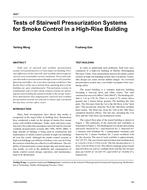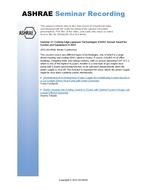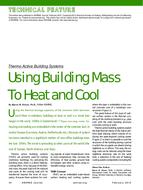ASHRAE Standard 161, Air Quality within Commercial Aircraft, includes a requirement for bleed air sensors to detect contamination fromlubricating oil. One potential approach to meeting this requirement is through particle detection. A four-part experimental program was conducted todevelop a detailed characterization of particles that result when bleed air is contaminated with lubricating oil. The first part of the program utilized ableed air simulator. A reciprocating compressor follow by a heated tube was used to create controlled temperature and pressure conditions representative ofbleed air from an aircraft engine. Aerosolized lubricating oil was injected into the airflow upstream of the compressor and the particulate characteristicswere measured downstream of the heated tube. The second and third parts of the program used turbine shaft engines mounted in a test stand andconnected to a dynamometer for controlled loading. Aerosolized oil was mixed into the inlet air and the resulting particle characteristics in the bleed airwere measured. The compressor for the second part utilized both axial and centrifugal compression stages while the compressor for the third part utilizeda single centrifugal stage. The fourth part of the program utilized an engine on an US Air Force C-17 military transport aircraft. Oil was injected intothe first stage of the compressor and the bleed air from the engine was diverted to a test platform where it was cooled and sampled. Particulate sizedistributions and concentrations were measured with aerodynamic particle sizing and scanning mobility particle sizing. Collectively, these instrumentscould measure concentrations and size distributions for particles ranging from 10 nanometers to 20 microns. The measurements showed that oilcontamination in the compressor will result in a fog of very fine droplets in the bleed air under most operating conditions. Typically these droplets are inthe 10-150 nanometer range. With very low contamination rates, it appears that many of the droplets may be even smaller than 10 nanometers. Thisresearch shows that development of sensors for detecting oil contamination in aircraft bleed air should focus on ultrafine particle detection and sensing oflow contamination levels may require sensitivity to extreme ultrafine particles 10 nanometers and smaller.
Citation: 2017 Winter Conference, Las Vegas, NV, Conference Papers
Product Details
- Published:
- 2017
- Number of Pages:
- 8
- Units of Measure:
- Dual
- File Size:
- 1 file , 1.3 MB
- Product Code(s):
- D-LV-17-C046


